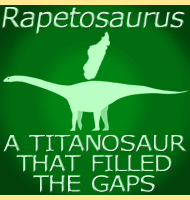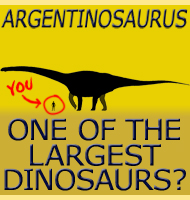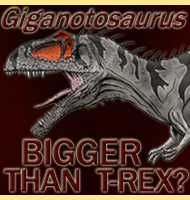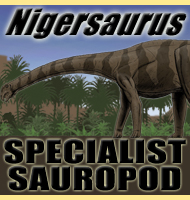


Patagotitan
Name:
Patagotitan.
Phonetic: Pah-tah-o-ty-tan.
Named By: J. L. Carballido, D. Pol, A.
Otero, I. A. Cerda, L. Salgado, A. C. Garrido, J.
Ramezani, N. R. C�neo & J. M. Krause - 2017
Classification: Chordata, Reptilia, Dinosauria,
Saurischia, Sauropoda, Titanosauria, Lognkosauria.
Species: P. mayorum (type).
Diet: Herbivore.
Size: Holotype roughly estimated to have been 37
meters long.
Known locations: Argentina, Chubut Province -
Cerro Barcino Formation.
Time period: Albian of the Cretaceous.
Fossil representation: Partial post cranial
skeletons of at least six individuals.
Patagotitan
is a genus of titanosaurian
dinosaur that lived in South America
towards the end of the Early Cretaceous. Titanosaurs are often known
by only a handful of fossils, but Patagotitan has
proved to be an
exception. At the time of writing Patagotitan is
known from the
partial post cranial remains of at least six individuals, and these
include remains of vertebrae (neck, back and tail), ribs,
shoulders, front and back limbs. The large size of these bones has
led to some crediting Patagotitan as the largest
dinosaur ever, but
this statement is highly speculative. The original describers
estimated Patagotitan to have grown to about
thirty-seven meters,
though others have suggested less, and others more. Future
discoveries and studies may well lead to further revisions.
Further reading
- A new giant titanosaur sheds light on body mass evolution among
sauropod dinosaurs. - Proceedings of the Royal Society of London B
284:20171219:1-10. - J. L. Carballido, D. Pol, A.
Otero, I. A. Cerda, L. Salgado, A. C. Garrido, J.
Ramezani, N. R. C�neo & J. M. Krause - 2017.
----------------------------------------------------------------------------
Random favourites
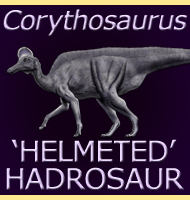 |
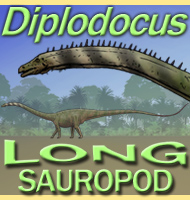 |
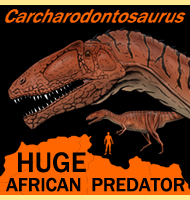 |
